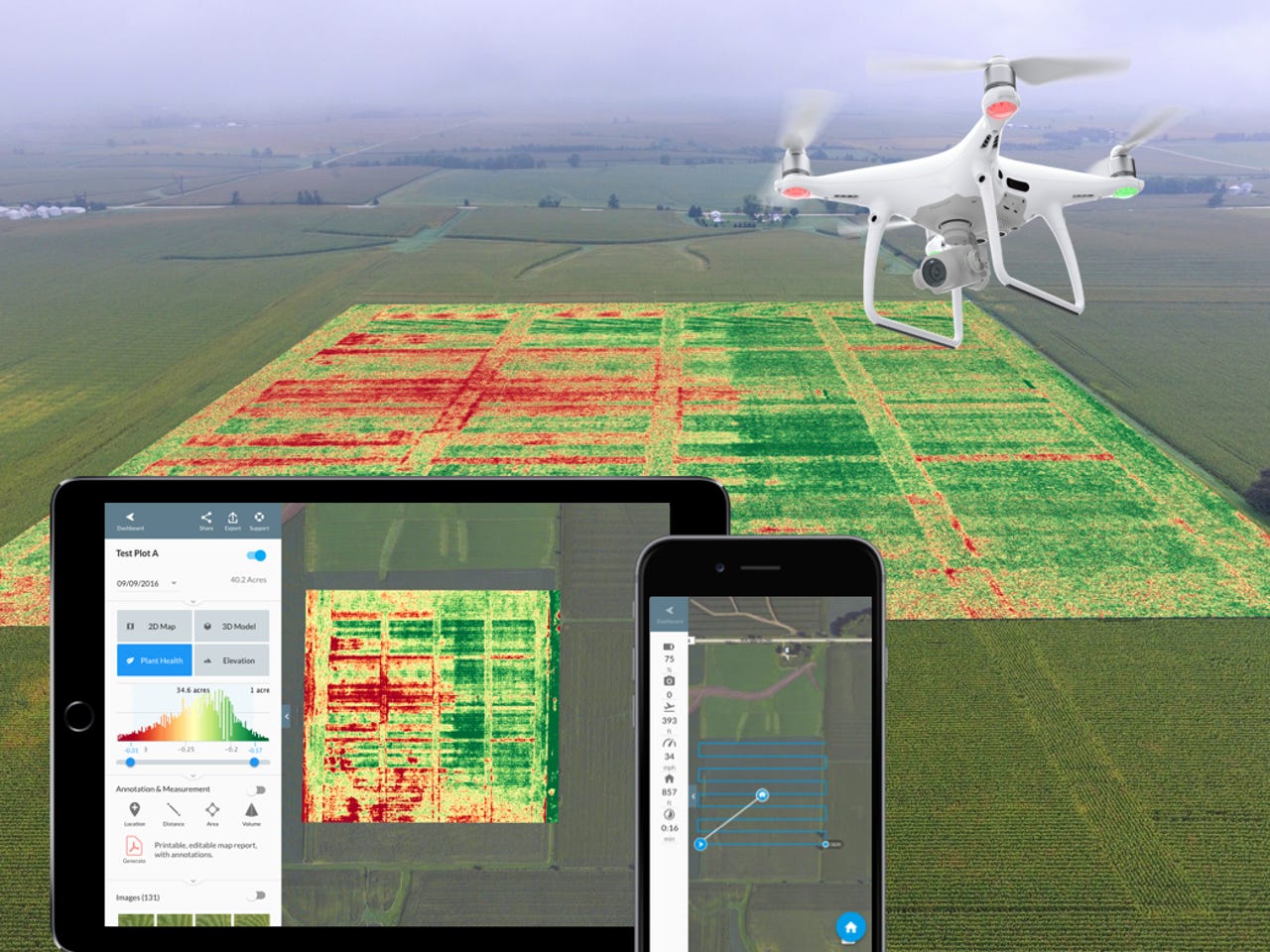Data-driven farming with agricultural drones


Image: DroneDeploy / CNH Industrial
Industrial machinery manufacturer CNH Industrial previously revealed a concept for autonomous tractors that could turn farming into a desk job. Now, CNH is also partnering with DroneDeploy to offer farmers an all-in-one UAV system bundle. This isn't the first or the only agricultural drone package on the market, but it's exciting to see a large capital goods company like CNH getting serious about drone software.
Agricultural drones have been around for a few years, but we expect to see rapid adoption of the technology, as several factors have suddenly combined to make drones much more appealing to farmers. Previously, agricultural drones were often fixed-wing UAVs, which were expensive and required expertise.
Today's drones are built with many of the same components as our ubiquitous smartphones, so economies of scale make drones cheaper and smarter. They can do much more than take aerial photos -- though that is helpful, too. Drones can quickly gather data that can help farmers make decisions about how to manage crops. In addition to hardware improvements, drone software has also gotten better, with several apps that are specifically designed for farming. Finally, the Federal Aviation Administration recently made it much easier for anyone to become a commercial drone pilot.
CNH's new offering includes a DJI Phantom 4 Pro drone with an RGB camera and a one year subscription to DroneDeploy's mapping software for flight planning and data capture. Farmers can use drones to capture real-time field imagery that apps analyze to help identify any crop health issues. For example, the system can detect parasites and fungi, quantify crops (for projections or insurance claims), monitor livestock, and identify crop stress. Flights can be automated and data can instantly be sent to an off-site location.
Does this mean that farmers won't get their hands dirty anymore? No, but it can certainly save them a significant amount of time in the fields. Someday in the not-so-distant future, agricultural drones could even communicate directly with CNH's driverless tractors to take action such as fertilizing fields or applying pesticides. Together, the drones and tractors could work around the clock to monitor and maintain the fields while farmers sit in an office and analyze the data. The drones could follow a set schedule, take automated flight paths, and dock themselves for recharging as needed.
This automated farming scenario is part of two much bigger trends across all industries: Data-driven work and the consumerization of technology. High-tech tools such as drones and driverless vehicles (in this case, tractors) are becoming less expensive and more intuitive. Sensors are everywhere, so data is easy to collect. The next generation of farmers just might have to become experts in data analytics.
VIDEO: UPS tests residential delivery via drone